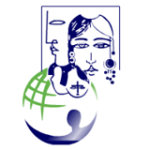
What image do you have of the Middle East? Watch the television or read the news and you are likely to see bombs and bullets, injured children and the shifting sands of multiple war zones.
But there is another place in the sophisticated cities of the Middle East where a well-educated, courteous, skilled, entrepreneurial population live. A population that is taking up the philanthropy that is a pillar of culture and religious belief in the region and that is modernizing it.
We are familiar with some of the challenges that people in the region face; there are humanitarian crises in the region, some of which (the Palestinian crisis for example) have been going on all of our lifetimes.
But there is also a deeper generational shift going on across the region, and philanthropy is at its heart. This is the ‘legacy philanthropy’ referred to by Naila Farouky in an excellent paper for the Arab Foundations Forum. Ms Farouky talks about passing on ‘the values of giving, of wealth and resource distribution over time’ and emphasises the importance of young people.
There is a ‘demographic bulge’ – a booming population of young people in the region – and at conferences on philanthropy in the region one can hear speakers from foundations and philanthropies focusing on youth. Work with young people is seen as a way of passing on values and also of providing for a generation that is often critical of the political masters in the region. Leading foundations in the region are focusing on youth; take a look for example at the Emirates Foundation, or at Dubai Cares, whose vision is ‘To break the cycle of poverty by ensuring all children have access to quality primary education’.
Philanthropy is big in this region, with the Bahrain ranked 13 and the UAE 14 in the World Giving Index 2015. The figures for individual gifts or grants by foundations can be really surprising. In 2014, for example, the Khalifa Bin Zayed Al Nahyan Foundation gave AED 830m (€200m) in overseas aid, up from AED 780m in the previous year. The Emirates Red Crescent gave AED 860m (€210m) in the same year.
There is a growing number of foundations in the region, and they are networking. From just four members in 2007, the Arab Foundations Forum has now grown to 31 members. People of wealth and companies in the region appear to want to formalise and professionalize their giving.
How are people giving?
Philanthropy Age covers news and interviews from the region, and last year published a YouGov survey, the Arab Giving Survey. YouGov carried out research with a representative sample of 1,008 respondents in the GCC states (KSA, UAE, Bahrain, Kuwait, Qatar and Oman.)
Key findings from the survey include:
- The average annual donation was $207 with just over half of respondents giving less than $150
- On average, people gave to two charities, and 57% give to the same organisations year after year
- 58% give spontaneously
- Collection boxes are the most used means of giving, with 55% of respondents
- 17% give by regular bank transfer
- Two thirds of respondents give during Ramadan and Eid, and religious belief was the main motivation for giving amongst 45% of respondents
- Top causes were third-world issues and overseas aid/disaster relief, but respondents also said that they preferred giving to local causes rather than INGOsKey challenges include:
- Diversity; this is a very diverse region in terms of people, money, culture and religion. One strategy, one structure, will not fit all
- Data; there is still very little data on giving in the region, so it is difficult to compare markets accurately
- Due Diligence; the lack of transparency amongst some foundations makes it difficult to carry out the due diligence work that your organisation may require
- Infrastructure; some financial and government institutions in the region slow to adapt to philanthropy
- Frontiers; a cross-over between philanthropy, state and ruling families is common across the region.
- Professionals; there is a small but growing number of professionals in fundraising in the region. Many organisations have to recruit outside fundraising, and train people in-house.
- Compliance; the laws and policies on fundraising and NGOs vary across the region and will restrict what your organisation can do. In many parts of the region law and legal structures are ambiguous and this, say Kuttab and Johnson ‘is likely a disincentive to create philanthropic institutions.’
- Rapid change; attitudes to philanthropy are changing rapidly, with some foundations now at the cutting edge of social enterprise/social investment/venture philanthropy. Be ready for some surprises!A wealth of giving in the Middle East
The Middle East and the wider Arabic-speaking world is an exciting, changing, challenging area for fundraising. It is a place that requires patience and local knowledge to understand the various combinations of culture, religion, government and civil society that pattern the region. But it is also a place where non-profits can build strong, lasting local partnerships that build on the region’s millennial traditions of giving.
Written by Chris Carnie
Image: CC
Publication date: September 6, 2016MENA’s first free click-to-donate platform – you click, we donate
Find out more about nonprofits from the Arab World




Copyright © 2024 The Olive Tree SAL, all rights reserved. Terms of Use | Privacy Policy